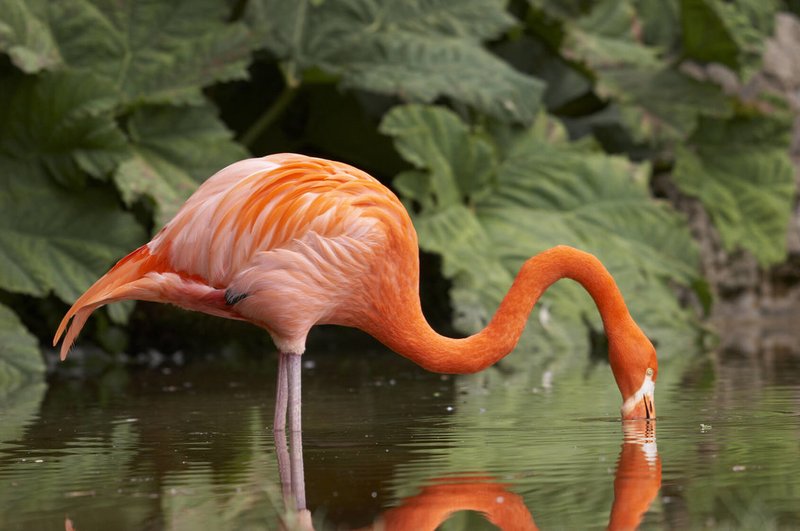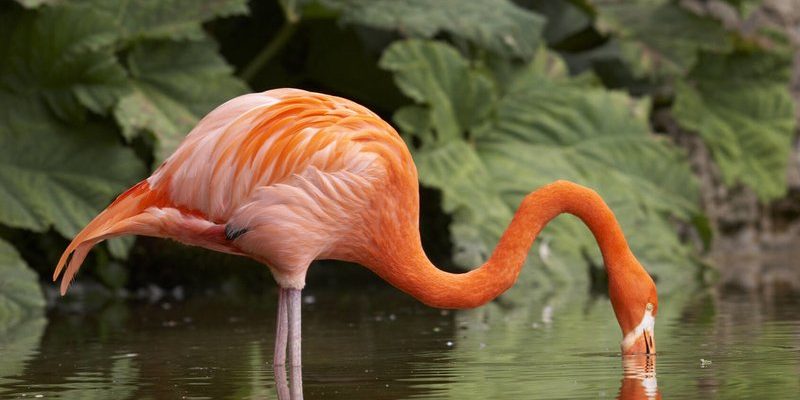
Honestly, identifying flamingos isn’t just about their vibrant color; it’s a mix of their behavior, habitat, and even their unique sounds. Imagine you’re on a nature walk, and you come across a large gathering. At first glance, they might just look like a splash of pink against the green backdrop. But as you observe them closely, you’ll start to notice their distinctive features. Let’s dive into how you can spot and identify flamingos, making your next outdoor adventure even more rewarding.
Understanding Flamingo Characteristics
Flamingos are not just pretty faces; they have some truly remarkable characteristics. First off, *their color* is what most people notice. While they are often pink, the shade can vary from pale to vibrant depending on their diet. Their feathers come from the carotenoid pigments in the food they eat, like algae and shrimp. So, you might even see flamingos that appear white or gray in certain regions!
Next, their *body structure* is quite unique. Flamingos have long necks and legs that are perfectly adapted for their shallow-water foraging. They stand on one leg most of the time, which is quite a sight! But why do they do this? It’s believed that standing on one leg helps them conserve heat. Now, when you focus on spotting them, look for their long, curved necks that give them an elegant silhouette against the water’s horizon.
Another major feature to note is their *beak*. Flamingos have a distinctive downward-bent beak designed for filtering food from the water. They use this beak in a unique way, turning their heads upside down to feed while wading through the shallows. Keep an eye out for them using this fascinating feeding technique during your birdwatching adventures.
Typical Habitats of Flamingos
Finding flamingos isn’t as simple as walking to the nearest pond. You’ll often find them in specific habitats. They thrive in warm, shallow waters like lagoons, estuaries, and salt flats. These environments provide the rich food sources they need to maintain their vibrant colors.
If you’re planning a trip, some of the best places to see flamingos include the *Caribbean*, *South America*, and parts of *Africa*. In these regions, flamingos are often found in large colonies. Watching them in groups can be an amazing sight, as they gather in various formations, especially during mating season when they perform their unique courtship displays.
Sometimes, flamingos can also be spotted in lakes with brackish water. These areas may not look too inviting to us, but to flamingos, they are a buffet of rich nutrients. So, while on your quest to identify these lovely birds, make sure you’re visiting the right kind of spots!
Behavioral Traits of Flamingos
Behavior plays a big part in identifying flamingos. Knowing how they act can really enhance your spotting skills. Flamingos are social creatures, often seen in large groups called “flamboyances.” You might observe them engaging in synchronized movements, like feeding together at the same time or performing elaborate courtship dances during mating season.
Their feeding habits are another key behavior to look for. Flamingos are filter feeders, which means they will dip their heads into the water and sift through it. If you see a bird bending down at odd angles or swirling its head in the water, there’s a good chance it’s a flamingo. Watching these quirky feeding behaviors in action can make for an entertaining experience.
And here’s the thing: in addition to their physical characteristics, *the sounds* they make can also help you identify them. Flamingos have a variety of vocalizations—everything from honks to grunts. If you hear these sounds, turn your attention, as it might lead you to a nearby flock.
Identifying Flamingo Species
There are six species of flamingos, and each has its own unique traits. The most common ones you’ll likely encounter are the *Greater Flamingo* and the *Lesser Flamingo*.
The *Greater Flamingo*, known for its tall stature and vibrant pink color, is the largest of the family. These birds can stand over four feet tall! Their beaks are also larger and distinctly shaped.
On the other hand, the *Lesser Flamingo* tends to be smaller and has a darker, more vivid pink color. They primarily feed on the blue-green algae found in specific lakes. If you spot a smaller, darker flamingo, you might just be looking at a Lesser Flamingo!
If you’re keen on a particular species, doing a little research beforehand can enhance your spotting game. Knowing the differences will help you appreciate the variety and beauty of these creatures, turning your nature walk into an exciting birdwatching adventure.
Use of Binoculars for Better Observation
To truly enjoy spotting flamingos in the wild, a good pair of binoculars can make a world of difference. When you’re at a distance, it can be tricky to catch all the details. Binoculars help you observe their behaviors without intruding on their environment.
When choosing binoculars, look for a pair that offers a good field of view; this lets you scan a wide area quickly, which is useful when searching for flamingos among other birds. A magnification of around 8x to 10x is generally good for birdwatching.
Remember to keep your binoculars steady for the best view. A tripod can be helpful if you’re planning to observe for an extended period. Just picture it: you’ve got your binoculars in hand, and you’re watching a flamboyance of flamingos wading gracefully in the water. It’s an experience that can connect you deeply with nature.
Respecting Flamingo Habitats
While it’s exciting to observe these beautiful birds, it’s crucial to respect their habitats. Flamingos are sensitive to disturbances, and their environments are often fragile. When visiting, always maintain a safe distance and avoid making loud noises that could scare them off.
Stick to established paths to avoid trampling vegetation that provides shelter and food for flamingos and other wildlife. If you’re using a camera for close-up shots, be respectful of the bird’s space. A good rule of thumb is to remain at least several hundred feet away.
You might also want to educate others about the importance of protecting these environments. The more we spread awareness, the better chance we have of preserving these stunning habitats for future generations of flamingos and birdwatchers alike.
Identifying flamingos in the wild can be a rewarding experience filled with wonder. From their vibrant colors and unique feeding habits to their fascinating social behaviors, these birds have a lot to offer. So, whether you’re planning a trip to a tropical lagoon or just looking to appreciate nature nearby, keep your eyes peeled for these lovely creatures.
Embrace the excitement of watching a flamboyance of flamingos and take the time to learn about their habitats and behaviors. The next time you head out into the wild, you’ll not only know how to identify flamingos, but you’ll also appreciate the beauty and intricacy of nature around you. Happy birdwatching!

